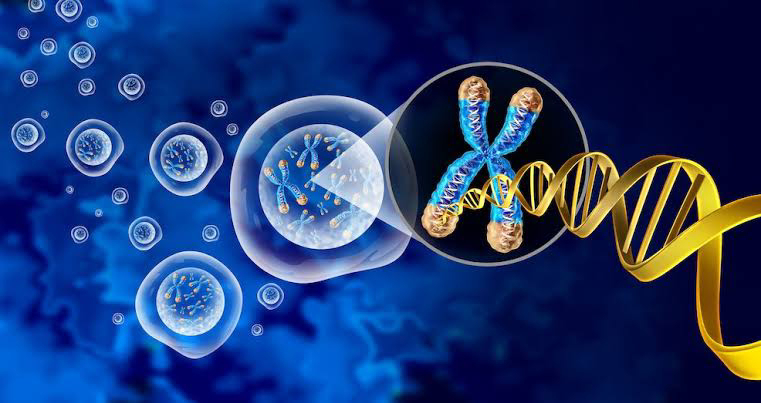Telomeres - Lifestyle, cancer, and aging
There is growing evidence that our lifestyle choices can influence how long we live by affecting the length of our telomeres. Telomeres are protective caps at the ends of our chromosomes that shorten as we age. When they become too short, our cells stop working properly, which can lead to aging and age-related diseases. Short telomeres have been linked to a higher risk of illnesses and shorter lifespans. However, making healthier choices in our diet and activities can slow down the shortening of telomeres, which may delay the onset of these diseases and help us live longer.
About Telomere
Telomeres are special structures made of DNA and proteins located at the ends of our chromosomes. They help protect our genetic material from damage, unnecessary mixing, and errors. Over time, as cells divide, telomeres get slightly shorter with each division. Once they become too short, the cell either stops functioning or dies. Because of this, telomere length acts like a biological clock, determining how long a cell or organism can live. Certain lifestyle choices can speed up the shortening of telomeres by causing damage to DNA, especially at the telomeres, which can affect a person's health and lifespan. In this review, we focus on lifestyle factors that can harm health by making telomeres shorten faster, as well as those that can help protect telomeres and improve overall health.
Structure and function of telomeres
Telomeres are protective structures made of DNA and proteins that are found at the ends of chromosomes. They help prevent the breakdown of genetic material and stop chromosomes from sticking to each other. Telomeres are connected to special proteins, and their structure forms a loop. One key protein, TRF2, helps protect the ends of chromosomes from being degraded by enzymes and might also assist in repairing telomeres by filling in gaps, similar to how DNA repairs itself during cell division. Telomere shortening occurs at each DNA replication, and if continued leads to chromosomal degradation and cell death. Telomerases are reactivated in most cancers and immortalized cells.
Telomere shortening
Normal diploid cells, which have two sets of chromosomes, lose a small part of their telomeres—the protective caps on the ends of chromosomes—each time they divide. Because of this, they have a limited lifespan when grown in lab cultures. For example, human liver cells lose about 55 base pairs of telomeres per year, and a similar rate of telomere shortening is seen in rapidly renewing cells like those in the stomach lining. Telomerase, an enzyme that can add back telomere sequences to the ends of chromosomes, is active in certain cells such as germline (reproductive), stem cells, and blood-forming cells, but is very low or absent in most normal body cells. When scientists introduce the telomerase gene into normal human cells, it extends their lifespan by preventing telomere shortening.
As we age, the protective caps on the ends of our chromosomes, called telomeres, naturally get shorter. When telomeres become shorter than average for a certain age, it has been linked to a higher chance of age-related diseases and a shorter lifespan. Telomere length is influenced by a mix of factors like age, genetics, environment, social and economic conditions, physical activity, body weight, and habits like smoking. When telomeres shrink too much, cells stop working properly or die. Unhealthy habits such as smoking, being overweight, not exercising, and eating poorly can speed up this shortening, leading to diseases and possibly an early death. Faster telomere shortening is connected to the early development of health issues like heart disease, diabetes, cancer, and osteoporosis.
Research on telomere length in older adults shows that those with shorter telomeres tend to have higher mortality rates compared to those with longer telomeres. When telomeres shorten too quickly, it can negatively impact both health and lifespan. Shorter telomeres can cause instability in the genome, which may lead to issues like chromosomes fusing together. This instability can contribute to the development of cancer. Interestingly, while cancer cells often have shorter telomeres, their telomerase activity (an enzyme that maintains telomeres) is usually higher. Some people are born with shorter telomeres or have genetic conditions that result in this, putting them at a higher risk for conditions like early heart disease and signs of premature aging.
Excessive telomere shortening can happen because of several factors:
- Smoking
- obesity
- Environment, nature of work, and stress
- Reduction in protein intake of food
- Not getting enough antioxidants
- Dietary restrictions
- Lack of physical activity








Comments
Post a Comment